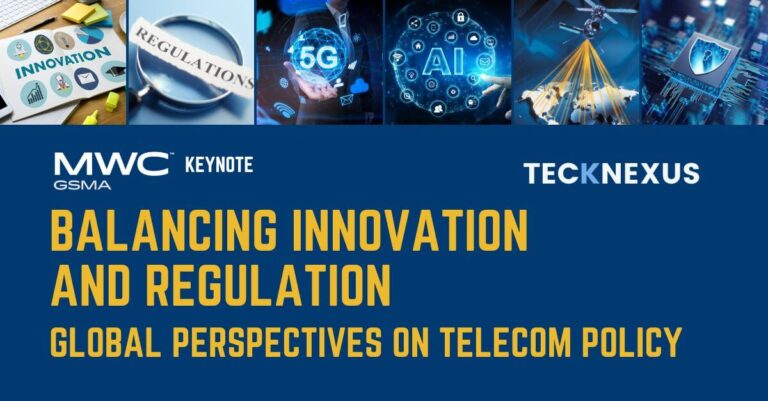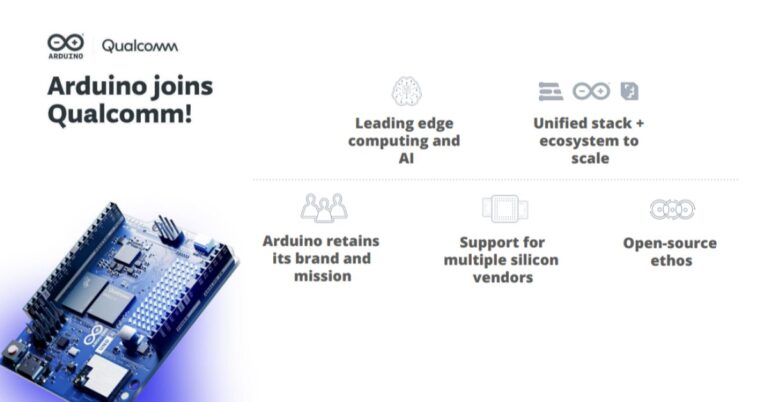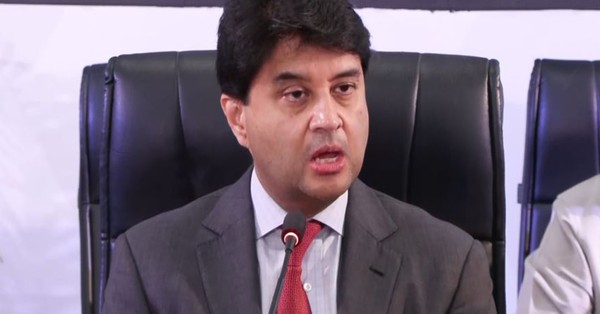Balancing Innovation and Regulation: Global Perspectives on Telecom Policy
The telecommunications industry is experiencing an unprecedented wave of innovation, driven by rapid technological advancements in 5G, AI, cloud computing, satellite broadband, and emerging 6G networks. However, with innovation comes the responsibility to ensure equitable access, consumer protection, cybersecurity, and fair market competition.
At MWC 2025, the keynote session on “Balancing Innovation and Regulation: Global Perspectives on Telecom Policy” will bring together prominent global regulatory leaders to discuss how telecom policies can foster innovation while ensuring stability and fairness in the digital ecosystem.
Key Session Details:
- Moderator: John Giusti, GSMA, Chief Regulatory Officer
- Speakers:
- Brendan Carr | Federal Communications Commission, Chairman, USA
- Jyotiraditya M. Scindia | Hon’ble Minister of Communications, India
- Henna Virkkunen | European Commission, Executive Vice-President for Tech Sovereignty, Security, and Democracy
This session will explore the evolving regulatory frameworks in India, the USA, and Europe, focusing on how these regions are shaping the future of digital infrastructure, spectrum management, cybersecurity, and competition policies.
Why Telecom Policies Must Evolve with AI, 5G, and 6G
Telecom regulations must evolve alongside the rapid advancements in 5G, AI, cloud computing, IoT, edge computing, and emerging 6G networks. While innovation drives economic growth, unchecked technological expansion can lead to monopolistic practices, cybersecurity vulnerabilities, and digital inequalities. Policymakers worldwide face the difficult task of:
- Encouraging private sector investment in digital infrastructure while ensuring affordable and equitable access.
- Defining data governance frameworks to address concerns over privacy, cybersecurity, and AI ethics.
- Regulating the expansion of satellite-based connectivity and low-Earth orbit (LEO) networks.
- Implementing fair competition policies to prevent monopolization by major telecom operators and big tech firms.
The challenge is to strike a balance between fostering innovation and protecting consumers—a topic that will be explored in-depth at MWC 2025.
Key Regulatory Priorities for 2025 and Beyond:
As the telecommunications landscape continues to evolve, global regulators are faced with a critical task—to craft policies that encourage digital transformation while maintaining fair competition, security, and consumer protection. The acceleration of 5G deployments, AI-powered automation, satellite broadband expansion, and early-stage 6G development requires a proactive and adaptive regulatory approach.
In this era of hyper-connectivity, policymakers must focus on regulatory agility, ensuring that telecom frameworks do not stifle innovation but instead enable rapid technological adoption. The challenge lies in designing forward-thinking policies that support:
- Seamless cross-border connectivity to drive international collaboration and trade.
- Sustainable digital infrastructure that aligns with climate goals and energy efficiency standards.
- Resilient cybersecurity frameworks to counter growing cyber threats in an increasingly interconnected world.
- Fair digital market practices that protect both telecom players and emerging tech startups from monopolistic practices.
- Universal digital access to bridge connectivity gaps, ensuring equitable opportunities for both urban and rural populations.
As we move towards a digital-first economy, regulatory frameworks must be dynamic, inclusive, and innovation-driven. Governments, industry leaders, and policymakers must work together to create an ecosystem that fosters investment, safeguards consumer rights, and accelerates technological breakthroughs.
The following key areas of regulatory focus will shape the next phase of the global telecom industry.
1. Spectrum Allocation and Management
Spectrum is the lifeblood of telecommunications. Efficient spectrum allocation ensures seamless connectivity, but policies differ across regions:
- USA: The Federal Communications Commission (FCC) focuses on auction-based allocation, allowing market-driven decisions for spectrum usage.
- Europe: The European Commission emphasizes harmonized spectrum allocation, ensuring that 5G and emerging technologies align with the EU’s Digital Decade strategy.
- India: The Telecom Regulatory Authority of India (TRAI) follows a hybrid model, balancing auction-based spectrum allocation with government intervention to support digital inclusion initiatives.
As 6G and AI-driven networks emerge, regulators will need to explore dynamic spectrum sharing, network slicing, and policies that encourage efficient spectrum usage while preventing anti-competitive hoarding.
2. Competition Policies and Big Tech Regulation
With telecom and tech giants expanding their influence, competition policies are being revisited:
- The EU’s Digital Markets Act (DMA) aims to prevent monopolistic behavior by requiring big tech companies to provide fair access to digital markets.
- The US DOJ and FCC have launched antitrust investigations against major tech firms for alleged anti-competitive practices in digital advertising and search engine dominance.
- India’s Competition Commission is strengthening regulations on fair pricing, consumer data protection, and digital payments regulation.
3. Cybersecurity and Data Protection Regulations
With telecom networks being critical national infrastructure, cybersecurity and data protection regulations are tightening:
- The USA’s Secure and Trusted Communications Networks Act mandates the removal of high-risk vendors from telecom networks.
- Europe’s GDPR and Telecoms Security Act enforce strict data privacy measures and network resilience standards.
- India’s Digital Personal Data Protection Act (DPDP), 2023, introduces stringent data localization rules to protect user data from foreign access.
4. Net Neutrality and Open Internet Policies
Net neutrality remains a contentious issue worldwide:
- The FCC under Brendan Carr is advocating for lighter-touch regulations to encourage investment in broadband expansion.
- The European Commission upholds strong net neutrality principles but allows exceptions for specialized services such as connected healthcare and autonomous vehicles.
- India’s TRAI enforces strict net neutrality laws, preventing telecom providers from prioritizing certain data traffic over others.
5. Digital Inclusion and Infrastructure Development
Regulators play a crucial role in bridging the digital divide by ensuring connectivity for rural and underserved populations:
- India’s Universal Service Obligation Fund (USOF) supports telecom expansion in remote areas.
- Europe’s Connecting Europe Facility (CEF) funds cross-border digital infrastructure projects.
- The USA’s Infrastructure Investment and Jobs Act (IIJA) includes billions for broadband expansion in rural and tribal areas.
6. Regulating Emerging Technologies (6G, AI, Edge Computing)
- 6G policy discussions are underway, with ITU, GSMA, and national regulators defining early roadmaps for spectrum allocation.
- AI-driven telecom networks require ethical guidelines to prevent bias in automation, with the EU’s AI Act setting a precedent.
- Edge computing regulations are being formulated to address data sovereignty, latency, and localized processing requirements.
India’s Telecom Policy: A Global Benchmark for Digital Growth
India has emerged as a global leader in telecom regulation, successfully balancing innovation with consumer protection. Under the leadership of Hon’ble Minister Jyotiraditya M. Scindia, the country has made significant strides in policy reforms, digital inclusion, and 5G expansion.
Key Achievements in Indian Telecom Policy:
-
5G and Spectrum Leadership:
- In 2022, India successfully conducted its largest-ever spectrum auction, paving the way for widespread 5G deployment.
- The government enabled affordable spectrum pricing to encourage greater investment from private telecom operators.
- The “Bharat 6G Vision” roadmap is already in motion, positioning India as a pioneer in future 6G technology.
-
Universal Connectivity and Rural Expansion:
- The PM-WANI initiative is democratizing Wi-Fi access, ensuring seamless connectivity in remote and underserved areas.
- Programs like Digital India and BharatNet are accelerating fiber broadband expansion to rural regions.
- The National Broadband Mission aims to provide high-speed internet to all villages by 2025.
-
Data Security and Consumer Rights:
- The Digital Personal Data Protection Act 2023 set new standards in data privacy, cybersecurity, and user consent transparency.
- The Telecommunications Act 2023 ensures strict regulations against spam calls, cyber fraud, and digital harassment.
- India has implemented AI-driven fraud detection systems to combat telecom-related cyber threats.
-
Encouraging Investment and Innovation:
- The government launched PLI (Production Linked Incentives) schemes to boost local telecom manufacturing and reduce dependency on foreign vendors.
- Indian startups are thriving in areas such as satellite broadband, AI-driven telecom analytics, and cloud-based 5G solutions.
- India is leading the Open RAN (O-RAN) movement, pushing for open-source, software-driven telecom networks.
-
Satellite Broadband and Space Tech Integration:
- The Indian Space Policy 2023 is opening the sector to private satellite players like OneWeb, Starlink, and Bharti-backed projects.
- With ISRO’s advancements in satellite technology, India is poised to lead the future of satellite-based internet services.
India’s telecom policy framework serves as a global example of how governments can embrace digital transformation while safeguarding consumer interests.
Regulatory Trends in Europe and the USA
As telecom networks become more critical to economic growth and digital transformation, policymakers in the USA and Europe are taking a more proactive approach to shaping the regulatory landscape. Both regions are working to strike a balance between fostering innovation, ensuring fair competition, and protecting consumer rights, but their approaches differ in key ways.
In the USA, federal agencies like the Federal Communications Commission (FCC) are focusing on infrastructure expansion, cybersecurity, and digital inclusion. The government is making significant investments in broadband infrastructure, ensuring that underserved communities have access to affordable, high-speed internet. Additionally, regulators are ramping up scrutiny of big tech companies, aiming to promote competition and prevent monopolistic practices that could stifle innovation in the telecom sector.
Meanwhile, Europe is taking a more regulatory-heavy approach, aiming to create a secure and sovereign digital ecosystem that reduces reliance on external technology providers. The European Commission is pushing forward with policies that prioritize data privacy, fair competition, and sustainable digital infrastructure, ensuring that telecom and cloud services align with regional security and sovereignty goals. New rules are also being introduced to regulate big tech companies and OTT (Over-the-Top) service providers, ensuring that they contribute fairly to network costs and comply with stringent European data protection laws.
While the USA prioritizes market-driven solutions and infrastructure investment, Europe leans towards a structured regulatory framework that safeguards digital sovereignty and consumer rights. Both approaches will shape the future of global telecom policy, influencing how emerging technologies like 6G, AI-driven automation, and satellite broadband evolve in the coming years.
European Union’s Tech Sovereignty and Digital Governance
- Europe is setting rigorous tech policies under the EU Digital Markets Act (DMA) and the Digital Services Act (DSA).
- The Draghi Report on Digital Infrastructure calls for greater investment in fiber networks and AI-driven regulation.
- The EU is prioritizing “Tech Sovereignty”, reducing reliance on non-European telecom and cloud providers.
- 6G research funding is being heavily supported under the Horizon Europe program.
The USA’s Focus on Cybersecurity and Infrastructure Investment
- The FCC is implementing stricter policies on net neutrality, broadband affordability, and rural connectivity.
- The Infrastructure Investment and Jobs Act (IIJA) has allocated billions for fiber expansion and 5G infrastructure.
- Cybersecurity remains a top priority, with the US government pushing telecom firms to meet higher security standards.
- The FCC’s anti-monopoly stance aims to create a level playing field for telecom operators and digital service providers.
Emerging Regulatory Challenges in the Telecom Sector
-
Managing AI and Automation in Telecom
- AI-driven automation is reshaping network management, but policymakers must establish accountability frameworks for AI-driven decisions.
-
Regulating Cross-Border Data Flow
- As data-driven telecom services expand, nations need clearer policies on global data governance.
-
Sustainability and Green Telecom Policies
- Telecom regulations must align with climate goals, encouraging energy-efficient 5G networks and eco-friendly data centers.
-
Addressing Digital Inequality
- Governments must ensure that rural, low-income, and underserved populations are not left behind in the digital revolution.
-
Spectrum Harmonization for 6G
- Regulators must work toward global spectrum harmonization to facilitate seamless 6G development.
The Future of Telecom Policy: A Collaborative Approach
For telecom policy to be future-proof, it must be adaptive, inclusive, and forward-thinking. This requires:
- Public-private partnerships to accelerate network expansion and digital inclusion.
- Flexible, AI-driven regulatory frameworks that evolve with emerging technologies.
- Global regulatory collaboration to set industry-wide security and data governance standards.
India’s Role in Shaping Global Telecom Policy
India’s proactive approach to spectrum policy, digital inclusion, and AI-driven governance makes it a valuable leader in global telecom policymaking. With its fast-growing digital economy and tech-savvy population, India is set to play a crucial role in shaping the next phase of digital transformation worldwide.
As MWC 2025’s keynote session will demonstrate, balancing innovation and regulation is not just a necessity but a strategic imperative. By fostering smart regulations, investing in infrastructure, and embracing emerging technologies, global telecom regulators can unlock a more connected, secure, and innovative future for all.
The Future of Telecom Policy: Innovation, Security & Inclusion
The keynote at MWC 2025 will provide unparalleled insights into how global regulators are shaping the future of telecommunications. As the industry undergoes its biggest transformation in decades, progressive regulatory policies will be the key to ensuring a seamless, inclusive, and secure digital economy.
With India, Europe, and the USA leading the way, the world is witnessing the rise of a dynamic regulatory landscape that supports both economic growth and societal well-being.
Let’s embrace the future of telecom innovation—responsibly, securely, and inclusively.
Session Moderators
John Giusti | GSMA, Chief Regulatory Officer
Session Speakers
Brendan Carr | Federal Communications Commission, Chairman
Jyotiraditya M Scindia | Ministry of Communication, Hon’ble Minister of Communications







































